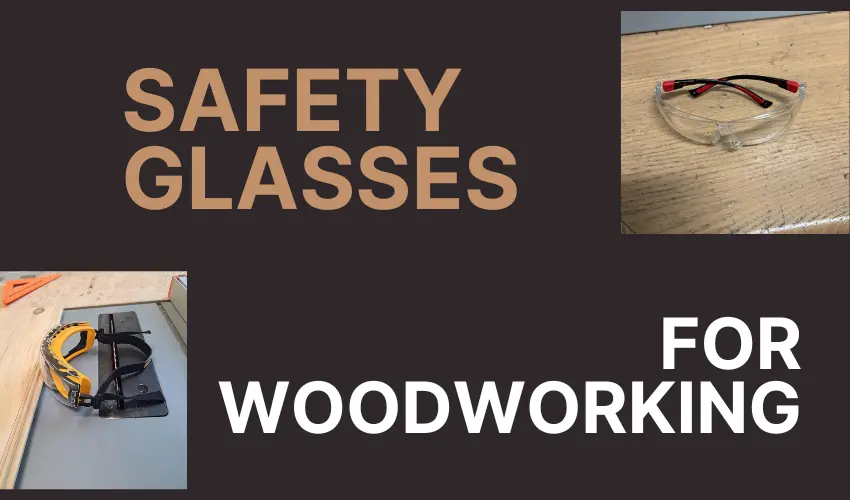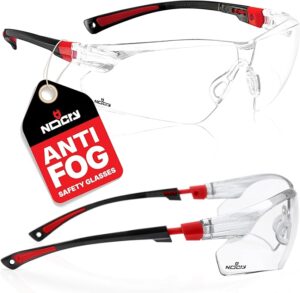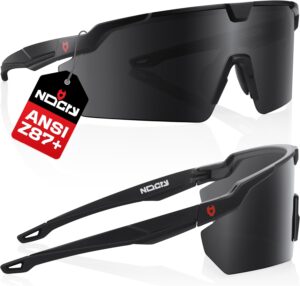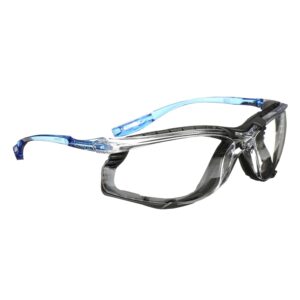When it comes to woodworking, your eyes are your most valuable tools—yet they’re also the most vulnerable. Flying dust, wood chips, and debris can turn a quick project into a dangerous situation in seconds.
That’s why choosing the best safety glasses for woodworking is essential for every DIYer, hobbyist, and professional woodworker.
Whether you’re sanding, sawing, routing, or using power nailers, the right protective eyewear will keep your vision safe and clear. This guide covers everything you need to know, including top features, types of lenses, recommended products, and tips for choosing the perfect pair.
Why Safety Glasses Are Essential in Woodworking
Woodworking produces:
-
Flying chips and splinters
-
Fine sanding dust
-
Chemicals from finishes and adhesives
-
Debris from power tools
Even a small particle can cause scratches, infections, or permanent vision damage. A quality pair of woodworking safety glasses helps protect your eyes from impact, dust, UV exposure, and fogging—ensuring you can work safely and confidently.
What to Look for in the Best Safety Glasses for Woodworking

When shopping for woodworking eye protection, keep these features in mind:
1. ANSI-Z87.1 Certification
This safety rating ensures your glasses meet strict industry standards for impact resistance.
2. Anti-Fog Coating
Sanding, sawing, and wearing dust masks all create humidity—anti-fog lenses maintain visibility.
3. Scratch-Resistant Lenses
Wood dust is abrasive. Scratch resistance ensures long-term clarity.
4. Comfortable Fit
Look for:
-
Adjustable temples
-
Soft nose pads
-
Lightweight frames
Comfortable glasses stay on your face longer—meaning better protection.
5. Full Coverage & Side Protection
Wraparound styles prevent debris from slipping in from the sides.
6. Compatibility with Other Gear
Ensure your safety glasses work well with:
-
Dust masks
-
Hearing protection
-
Hard hats
Best Types of Safety Glasses for Woodworking
Different tasks require different levels of protection. Here’s a quick breakdown:
Clear Safety Glasses
Best for general woodworking, precise measurements, and indoor use.
Pros: Maximum visibility, accurate color perception.
Tinted or Smoke Lenses
Ideal for outdoor woodworking or bright environments.
Pros: Reduce glare and eye strain.
Anti-Dust / Sealed Safety Goggles
Great for heavy sanding, grinding, or using rotary tools.
Pros: Foam-lined seal blocks fine dust completely.
Bifocal Safety Glasses
Perfect for woodworkers who need magnification for detailed or close-up work.
Pros: Combines protection with vision enhancement.
Top 5 Best Safety Glasses for Woodworking — Comparison Table
Product |
Image |
Key Features |
ANSI Rating |
Best For |
Pros |
Cons |
|---|---|---|---|---|---|---|
 |
Anti-fog, anti-scratch wraparound lenses; adjustable temples and nose pads; 100% UV protection |
ANSI Z87.1 |
Everyday woodworking & general shop use |
Lightweight, highly adjustable, clear vision, durable |
Not sealed—dust can enter during sanding |
|
 |
Anti-fog dual-mold goggles; foam seal; elastic strap; ventilation channels |
ANSI Z87.1+ |
Sanding, cutting, dusty environments |
Excellent dust protection, great fit, strong anti-fog |
Bulkier than glasses; may get warm during long wear |
|
 |
Built-in 2.0 diopter; impact-resistant polycarbonate; rubber temples; UV protection |
ANSI Z87.1+ |
Woodworkers requiring magnification |
Combines readers + PPE, comfortable fit, good clarity |
Limited diopter options; not dust-sealed |
|
 |
Anti-fog, anti-scratch tinted lenses; UV protection; adjustable nose pad; durable frame |
ANSI Z87.1 |
Outdoor woodworking or bright workshop lighting |
Comfortable, tinted UV protection, highly durable |
Not ideal for low-light indoor shops |
|
 |
Anti-fog, wraparound lenses; removable foam gasket; earplug control system |
ANSI Z87.1-2020 |
Dust control with breathable protection |
Foam gasket blocks dust, lightweight, compatible with earplugs |
Foam may trap heat; earplugs sold separately |
Top Safety Glasses for Woodworking (Recommended Picks)
1. NoCry Safety Glasses – Best for Everyday Use

The NoCry Clear Safety Glasses are a reliable, comfortable, and highly protective option for woodworkers who want serious eye protection without sacrificing visibility.
Made with durable polycarbonate wraparound lenses and ANSI Z87.1 certification, they offer excellent coverage from flying debris and dust—perfect for sawing, sanding, routing, and everyday shop work.
The adjustable temples and soft nose pads make them comfortable for long sessions, while the UltraShield anti-fog and scratch-resistant coating ensures clear vision even in humid or dusty conditions.
With 100% UV protection and a lightweight design, these glasses are versatile enough for woodworking, shooting, lab work, and general jobsite safety.
Pros
-
Strong polycarbonate construction with full wraparound protection
-
Adjustable temples and nose pads help achieve a custom, secure fit
-
UltraShield coating offers superior anti-fog and scratch resistance
-
100% UV protection for indoor and outdoor use
-
Lightweight, comfortable design with non-slip grips
-
Backed by a lifetime warranty
Cons
-
May fit snug for larger head sizes
-
Anti-fog performance can diminish over time if not cleaned properly
Overall, the NoCry Clear Safety Glasses deliver outstanding comfort, clarity, and protection—making them one of the best safety glasses for woodworking and daily workshop use.
2. DeWalt Concealer Safety Goggles – Best for Sanding & Dusty Tasks

3. DeWalt Reinforcer Bifocal Glasses – Best for Precision Work

Clear vs. Tinted Safety Glasses: Which Should You Choose?

Both are useful, depending on your environment:
Clear Lenses
-
Best for indoor woodworking
-
True color accuracy
-
Great for detail work
Tinted Lenses
-
Ideal for outdoor or bright shops
-
Reduce glare
-
Prevent eye strain
Tip: If your shop has large windows or bright LED lights, tinted lenses might be more comfortable.
FAQs About Safety Glasses for Woodworking
1. Do I need safety glasses even for hand tools?
Yes. Hand tools like chisels, mallets, and hand saws can still send chips flying.
2. Can I wear safety glasses over prescription eyewear?
Yes—look for OTG (Over-The-Glass) models or choose prescription-ready safety glasses.
3. Why do my safety glasses fog up when I’m working?
Humidity, sweat, and wearing dust masks funnel warm air upward. Anti-fog coatings or ventilated goggles solve this issue.
4. How often should I replace my woodworking safety glasses?
Replace them when scratched, cracked, or loose. Worn-out glasses reduce visibility and protection.
5. Are goggles better than safety glasses?
Goggles provide better dust sealing, but glasses are lighter and more comfortable for long use. Many woodworkers keep both on hand.
Final Thoughts: Protect Your Eyes Every Time You Work
Choosing the best safety glasses for woodworking is one of the simplest ways to stay safe in your shop. Go for durable lenses, a comfortable fit, and features like anti-fog coating and wraparound protection. With the right pair, you’ll protect your vision without sacrificing comfort or visibility.
Related Posts

